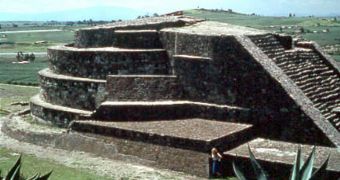The fact that the Americas were heavily populated long before European settlers came along is no longer a secret to anyone. Amerindians ruled over North America, while the central and southern parts of the continent were controlled by amazing civilizations, such as the Maya, Inca and Aztecs. These people built impressive metropolises, which acted as bustling centers of life for the rural populace. Even less-known cultures, such as Matlatzinco, constructed important cities, including the one known as Calixtlahuaca. Now, experts analyze its ruins, in hope of gaining new data on its builders.
The Postclassic period Mesoamerican archaeological site can be found in the Mexico, in the state of the same name. Located near the present-day city of Toluca, the area has yielded more than 500,000 artifacts thus far, which is one of the main reasons why researchers at the Arizona State University (ASU) continue to organize expedition to the location year after year. This is already the fifth year in which expert Michael E. Smith, an archaeologist at the university, leads his team to the ruins of Calixtlahuaca, in search of answers to some of the Matlatzinco culture's most intriguing questions.
The artifacts the location revealed thus far date as far back as 1100 AD. One of the reasons why researchers are so interested in the culture that built the metropolis is the fact that the Matlatzinco were closely akin to the Aztecs. This is the main focus point of the Calixtlahuaca Archaeological Project, in which the ASU team is involved. According to researchers, this citadel was the third-largest city in central Mexico, at the time the Aztec Period. As such, the spatial organization, households, farming systems and economic processes that founded the city are of great interest to archaeologists.
“This is a new kind of archeology for Aztec urban centers. Instead of excavating palaces, pyramids and tombs, we are studying the houses, workshops, terraces and farms of the commoner class. This allows us to reconstruct the city of Calixtlahuaca as a social community rather than simply as a place where kings and elites built large buildings,” says Smith, a professor at the ASU College of Liberal Arts and Sciences School of Human Evolution and Social Change. The team's work is supported by the US National Science Foundation (NSF).

 14 DAY TRIAL //
14 DAY TRIAL //